Crosses are among the most frequently used concepts for chance creation in football. And they pose a real issue for many defensive departments.
In the following tactical analysis, we will, therefore, examine the crosses from the recent Bundesliga match-day and deduce principles for successfully defending crosses.
In order to do so, we will use in-game scenarios from different Bundesliga sides such as Borussia Dortmund, Union Berlin, and Borussia Monchengladbach. We are also going to present examples of common mistakes and provide principles that help to avoid them.
3+1 defending setup
In order to create defensive tactics for defending crosses, we need to take a closer look at the most threatening areas. Often in terms of shooting positions, the area in front of the goal gets divided into six zones, as can be seen below.
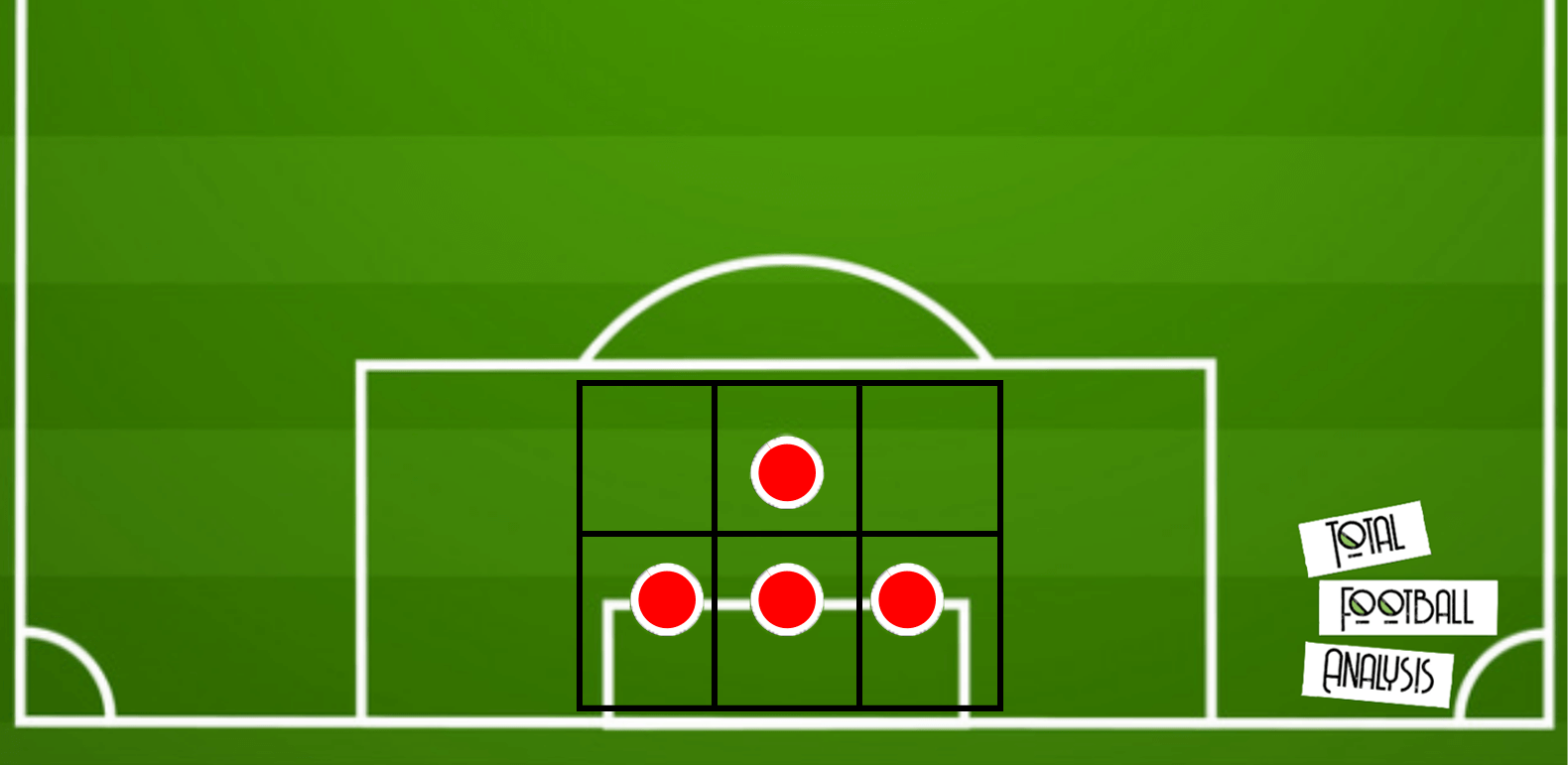
Obviously the zones closer to the goal provide a greater threat. Therefore, they should be occupied by defenders. Furthermore, the more central the zone, the more danger it poses. As a consequence, many attacking sides have a player occupying the space around the penalty-spot. And therefore, another player from the defending side, often a defensive midfielder, should occupy this zone. As the lateral zones further away from the goal are less dangerous, and since there are often not enough defenders available to occupy every single zone, they remain empty. This creates a 3+1 structure to defend crosses like in the above graphic.
Each player will take responsibility for an opposition attacker within his zone. And if the ball is played into the empty areas, one of the three can move forward or the defensive midfielder can shift into this zone.

Individual defensive principles
After having explained the group tactical behaviour when defending crosses, we should look at the individual defensive principles.
Obviously, although the zones can give a broad overview of the most threatening areas, the opposition attackers still provide the greatest threat. Only where attackers are positioned, a goal can be scored if we disregard the rare scenario of an own-goal which is, by the way, also often forced by an attacker nearby.
Therefore, the most important principle when defending crosses is to mark opposition attackers tightly. The closer to the goal, the tighter opposition players need to be marked. That is because the risk of a goal obviously rises with a decrease of distance to the goal. In the below example of Union Berlin against Bayern Munich, one can see how the Berlin defenders are close to their direct opponents centrally in front of the goal.
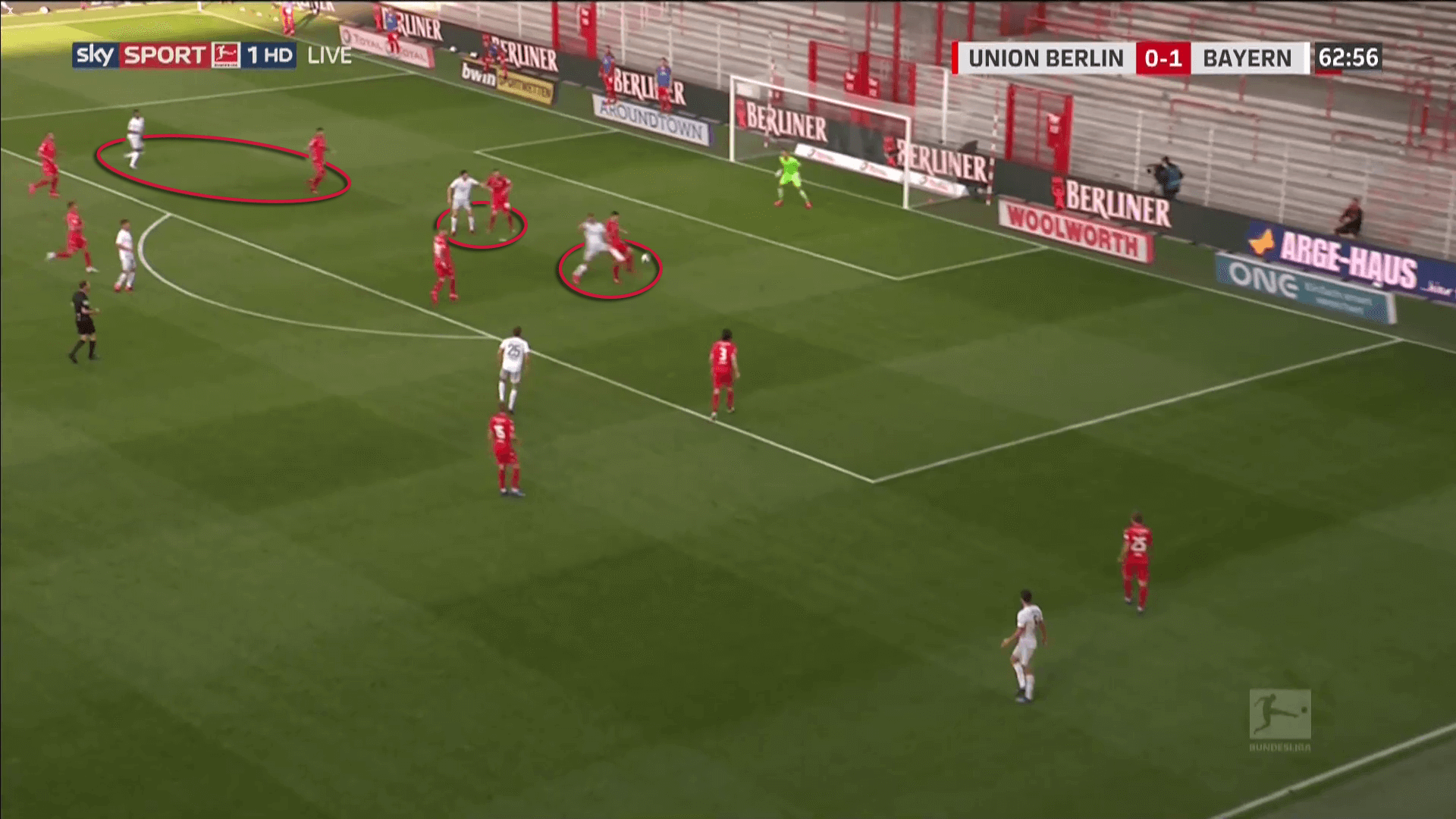
Another important principle for defenders is to always keep sight of the ball and the direct opponent. Otherwise, it enables the attacker to easily steal himself away in the back of the defender. Gary Neville calls it the “one second rule” which basically says that “you cannot look at the ball or the man for more than one second”. Instead, defenders always need to constantly check the position of the ball and the direct opponent.
Last but not least, defenders must also protect the most threatening space – the space behind the defence. If an attacker can receive a cross there, only the goalkeeper can protect the goal. In order to avoid this scenario, it is important for the defenders to stay on the inner line, meaning between attacker and goal. If the attacker then receives in front of the defender, the latter one can still block the shot. In the image below, we can see how Hoffenheim conceding a goal as their defender does not keep the inner line. The opposition attacker is now positioned closer to the goal than the defender.
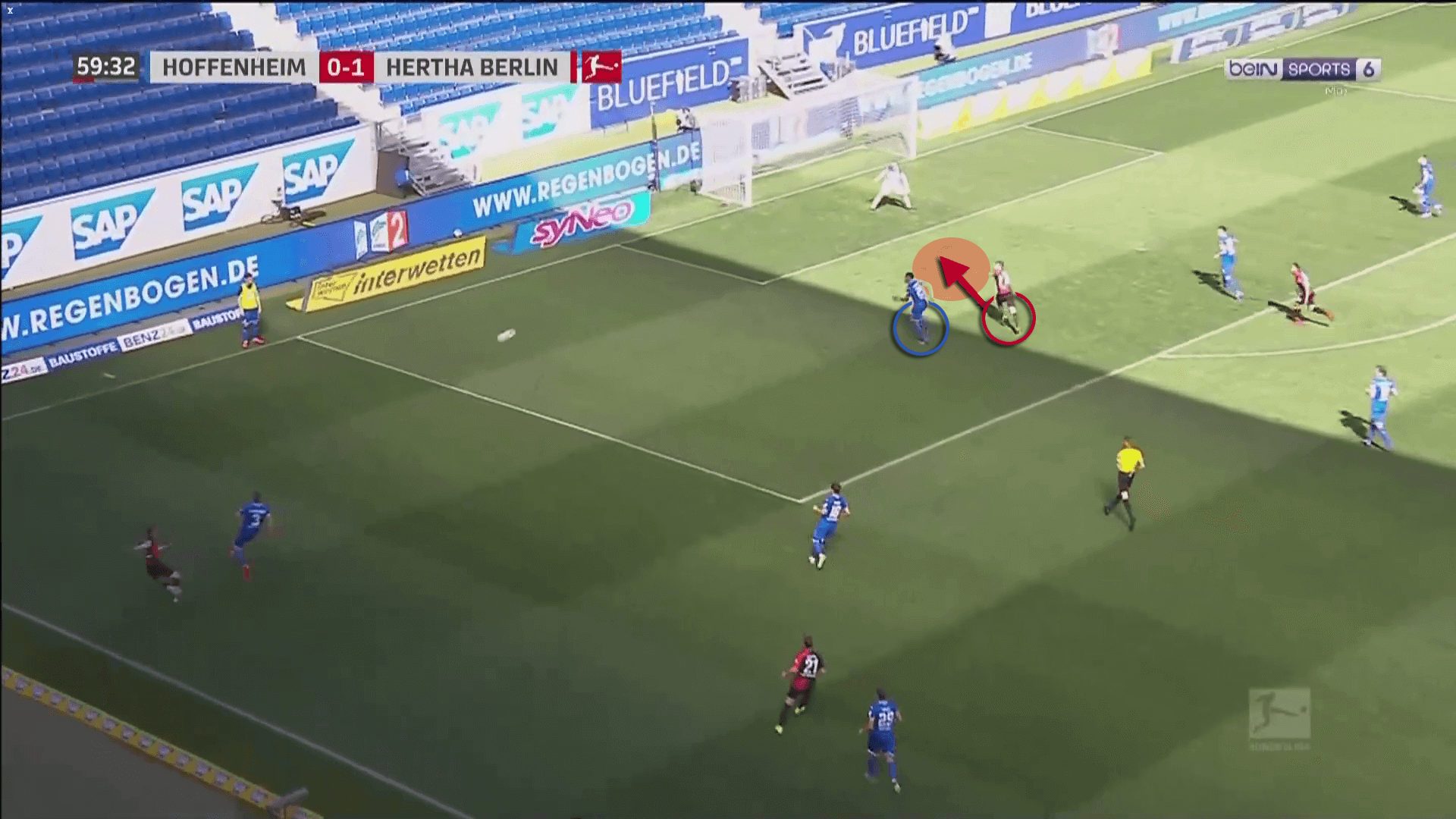
A fact that often gets overlooked is that the goalkeeper also plays a key role when defending crosses. The special ability to use the hands contrary to all other players, allows the goalkeeper to defend more space within the penalty area. Nevertheless, he obviously also holds the special responsibility to protect the goal and therewith needs to stay close to it. A rule of thumb is that the goalkeeper is responsible for crosses into the six-yard box. But in addition to that, depending on the position of the crosser, goalkeepers can decrease the space behind the back line by also attacking balls out of the six-yard box.
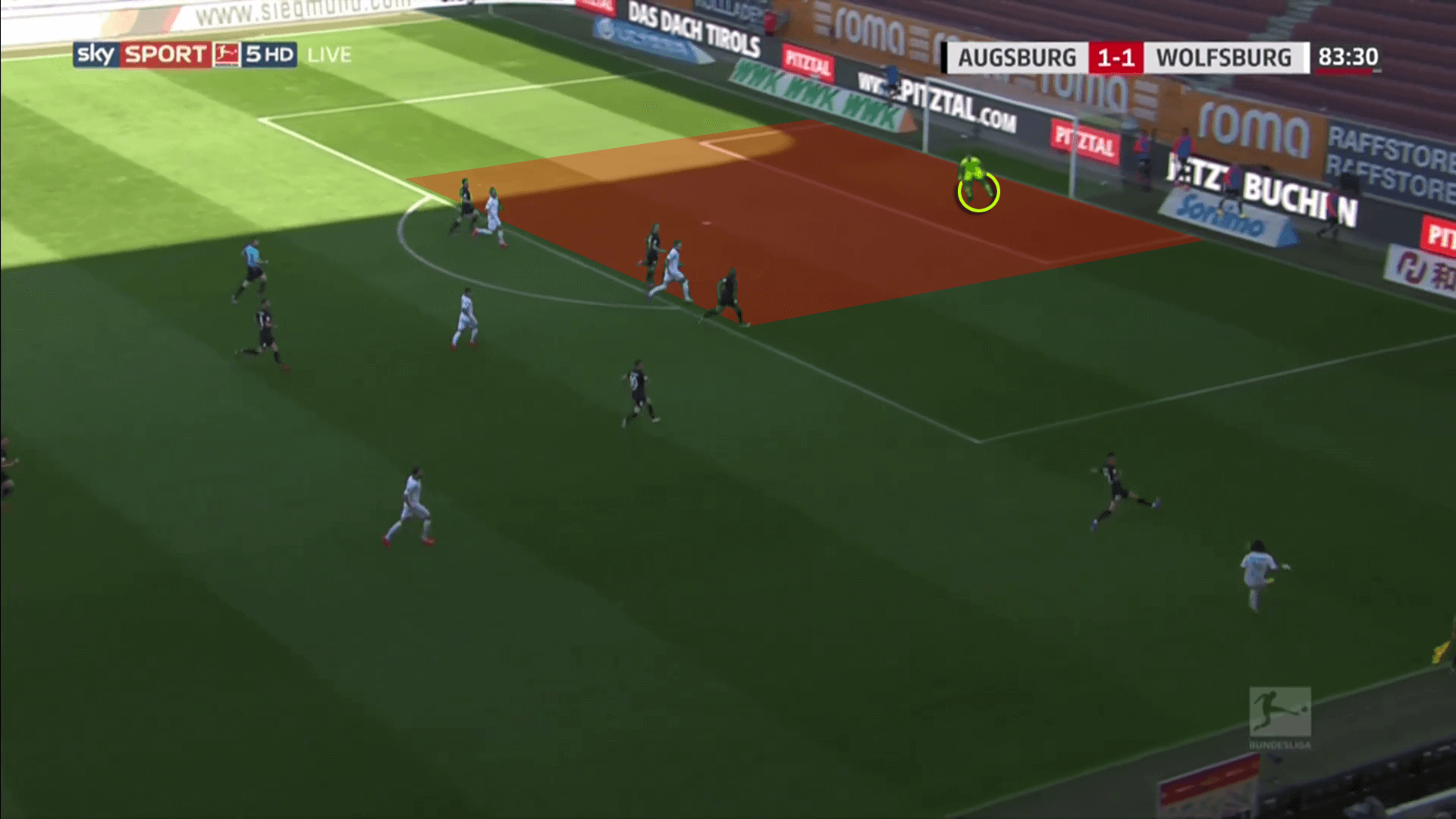
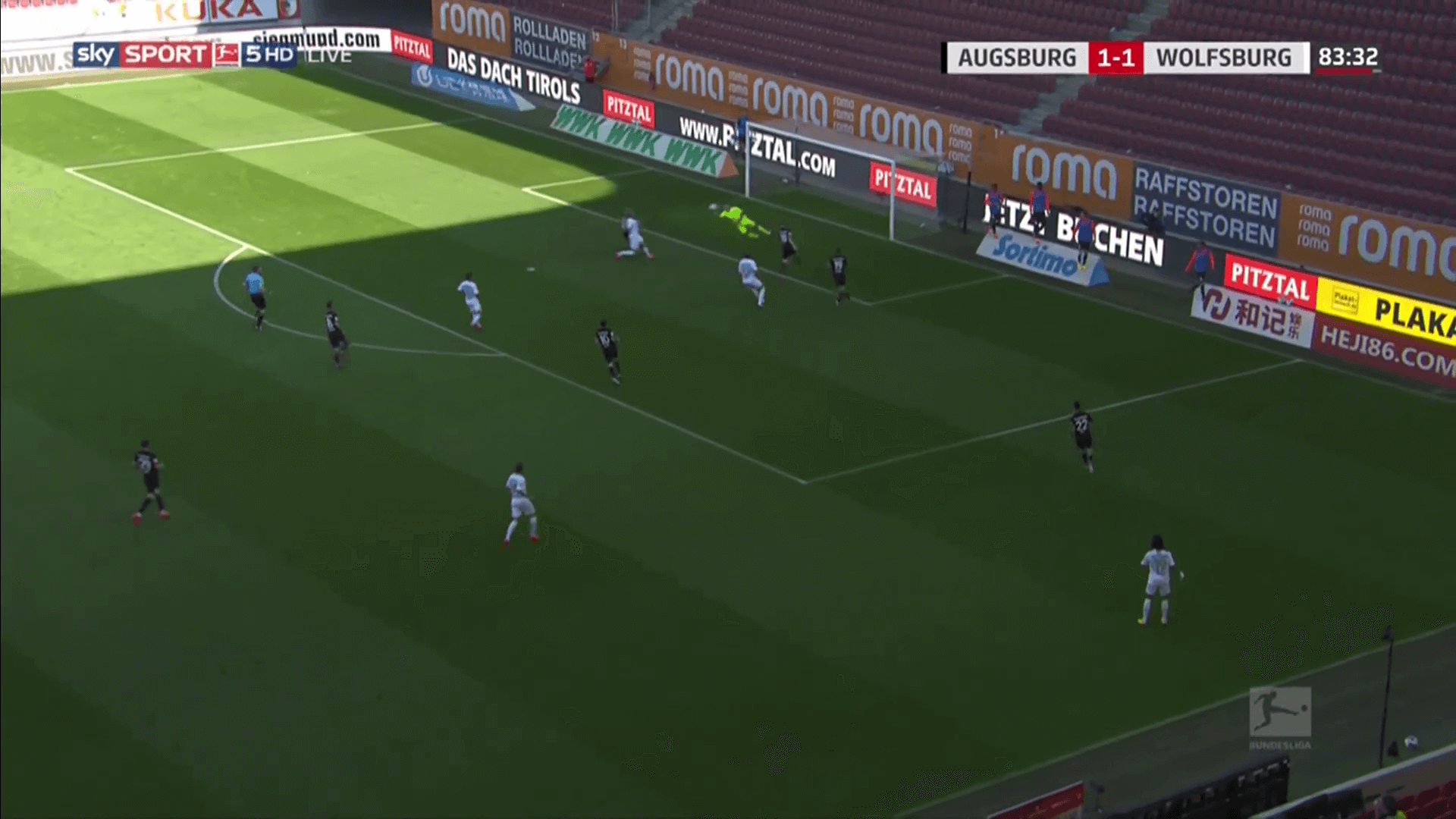
Reducing the far post threat
A tendency which can be seen when depicting the crosses from the recent Bundesliga match-day, is that crosses to the far post lead to threatening situations. These crosses can be extremely dangerous as the ball-watching defenders might not recognise opposition attackers arriving at the far post. And even if they do, the far post is often covered by the ball far full-back who could get overloaded by two attackers.
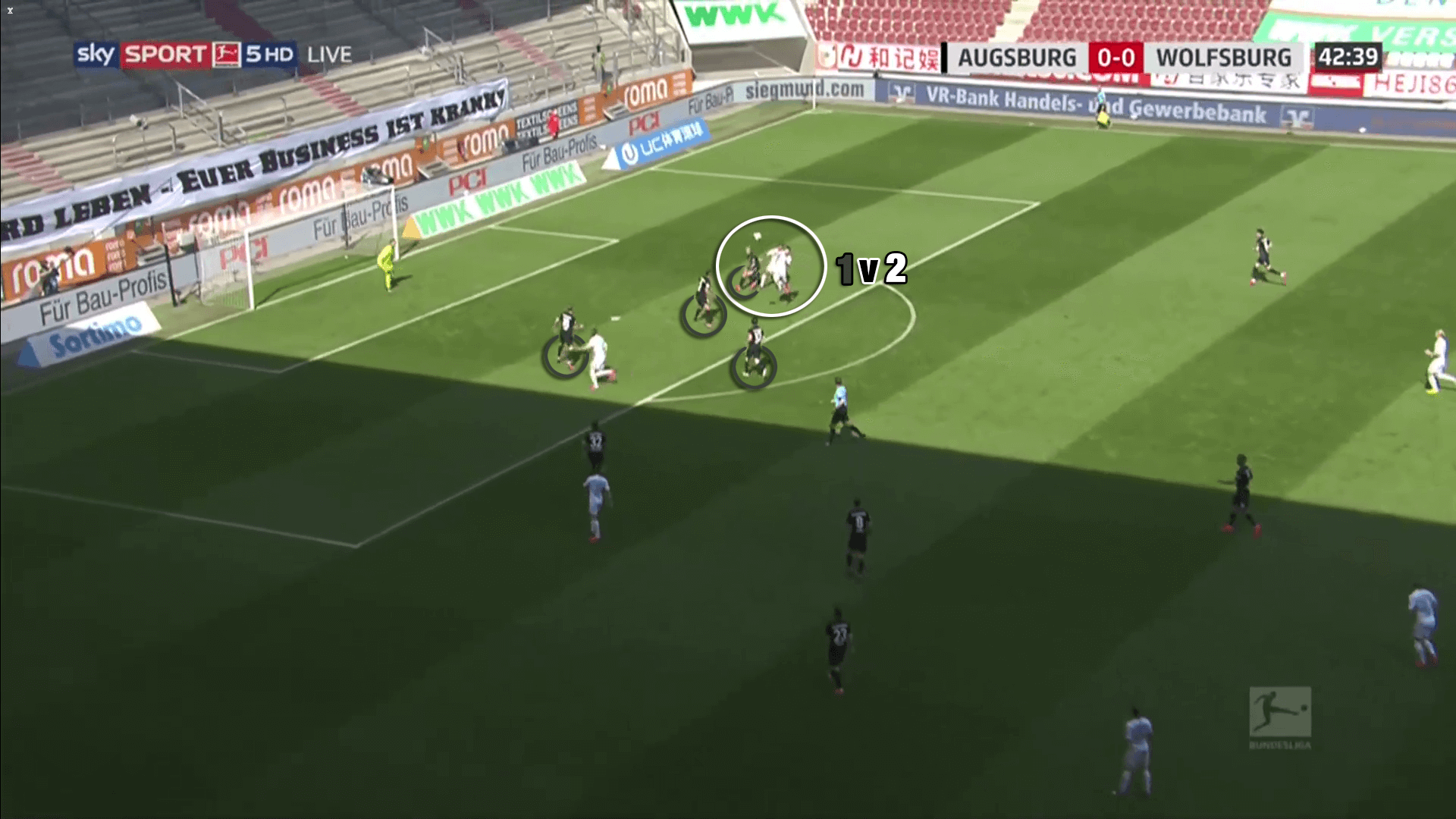
One way of avoiding this full-back underload on the far post is early communication. Because most often, they get into an underload situation because the centre-backs shift through too far without any direct opponent to mark. In the majority of the cases the defenders have a numerical superiority within the box. Nevertheless, they can only use that if they communicate about the marking responsibilities.
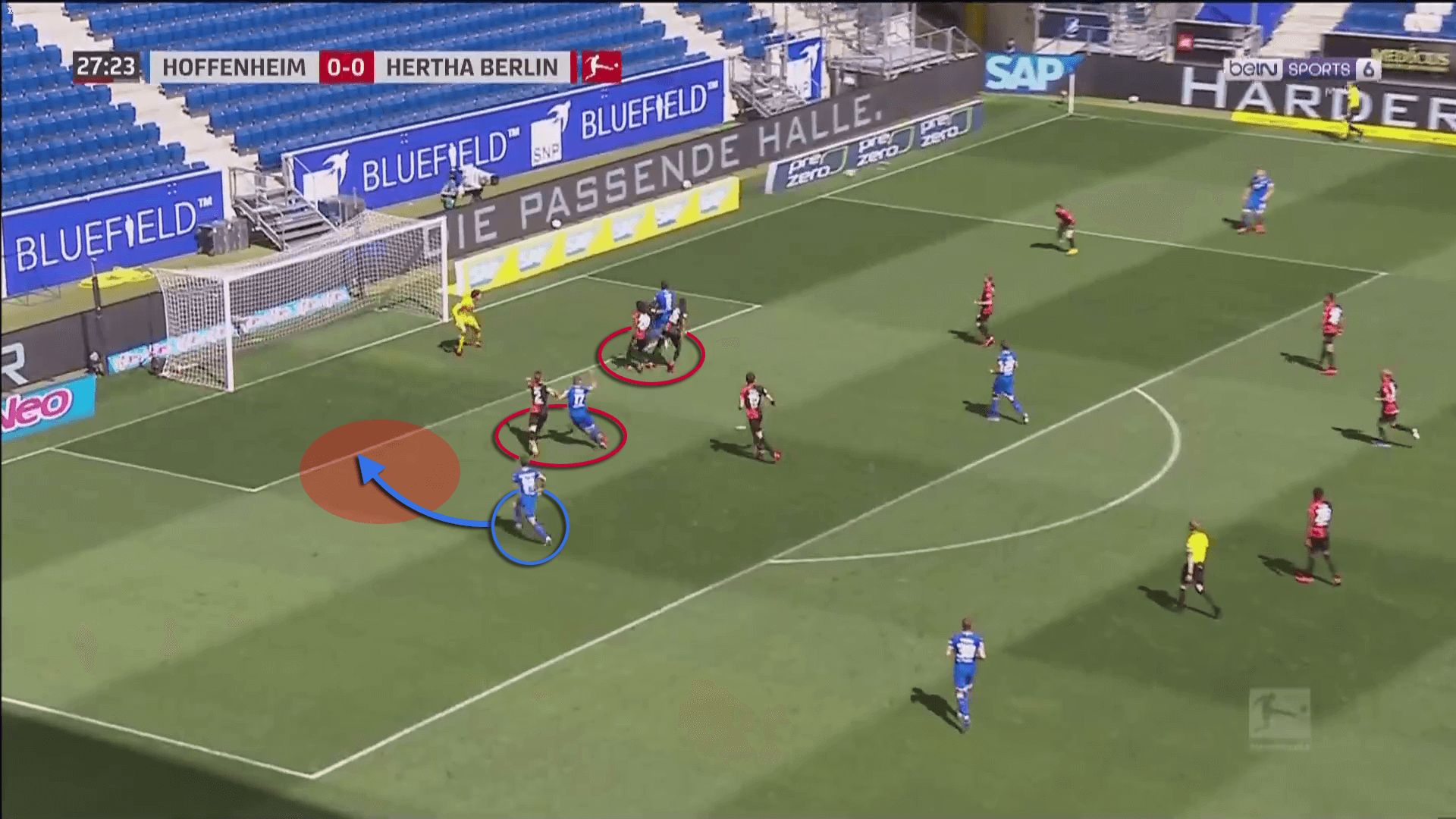
An often committed mistake that is connected with the far post issue is the positioning of defenders in the “no man’s land”. A term that has been established by tactician Jerome Polenz. According to him, the “no man’s land” is the area where defenders can neither block the cross nor cover the most central area in front of the goal. As a consequence, with players positioned in this area, the defensive department might lack players in the crucial areas to defend.
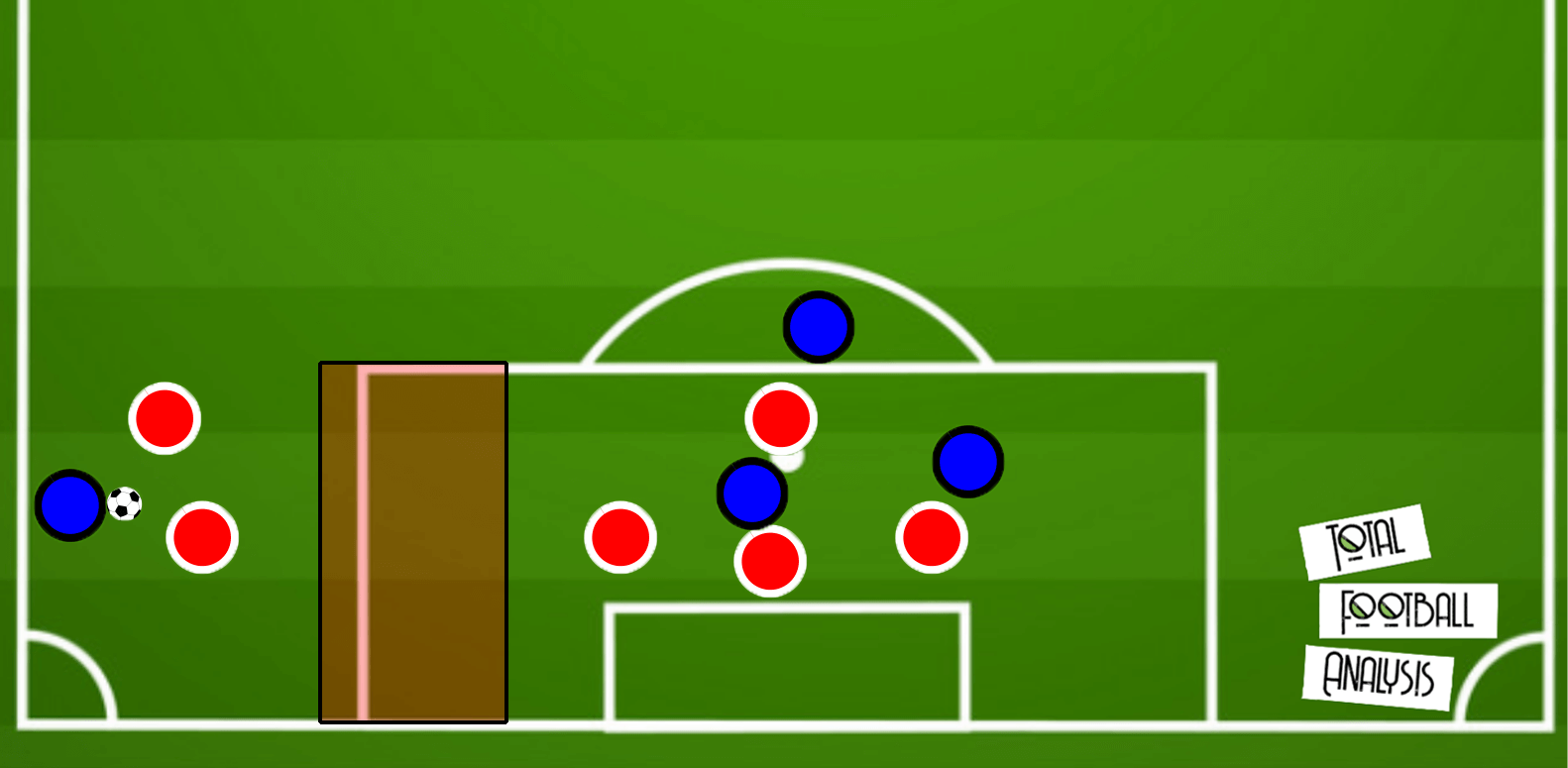
Blocking crosses
Another obvious but very effective way of defending crosses, is to nip the cross in the bud by blocking it as early as possible.
Ideally, the defending side would create an overload around the ball-carrier in a wide area. Then, one can actively press while the other one screens the path into the penalty area and blocks a potential cross. This numerical superiority near the ball obviously poses one of the easiest ways of preventing the cross to be played. And even if the opposition can put in a cross, under the pressure of two defenders, the cross will rarely be precise.
In reality, however, we also often see 1v1-situations out wide. In this case, the defender needs to execute the basic principles in a defensive duel, such as focusing on the ball rather than on the opposition movements. By getting closer to the ball, and staying in a frontal or diagonal position towards the ball rather than sideways, the defender can screen a greater area.
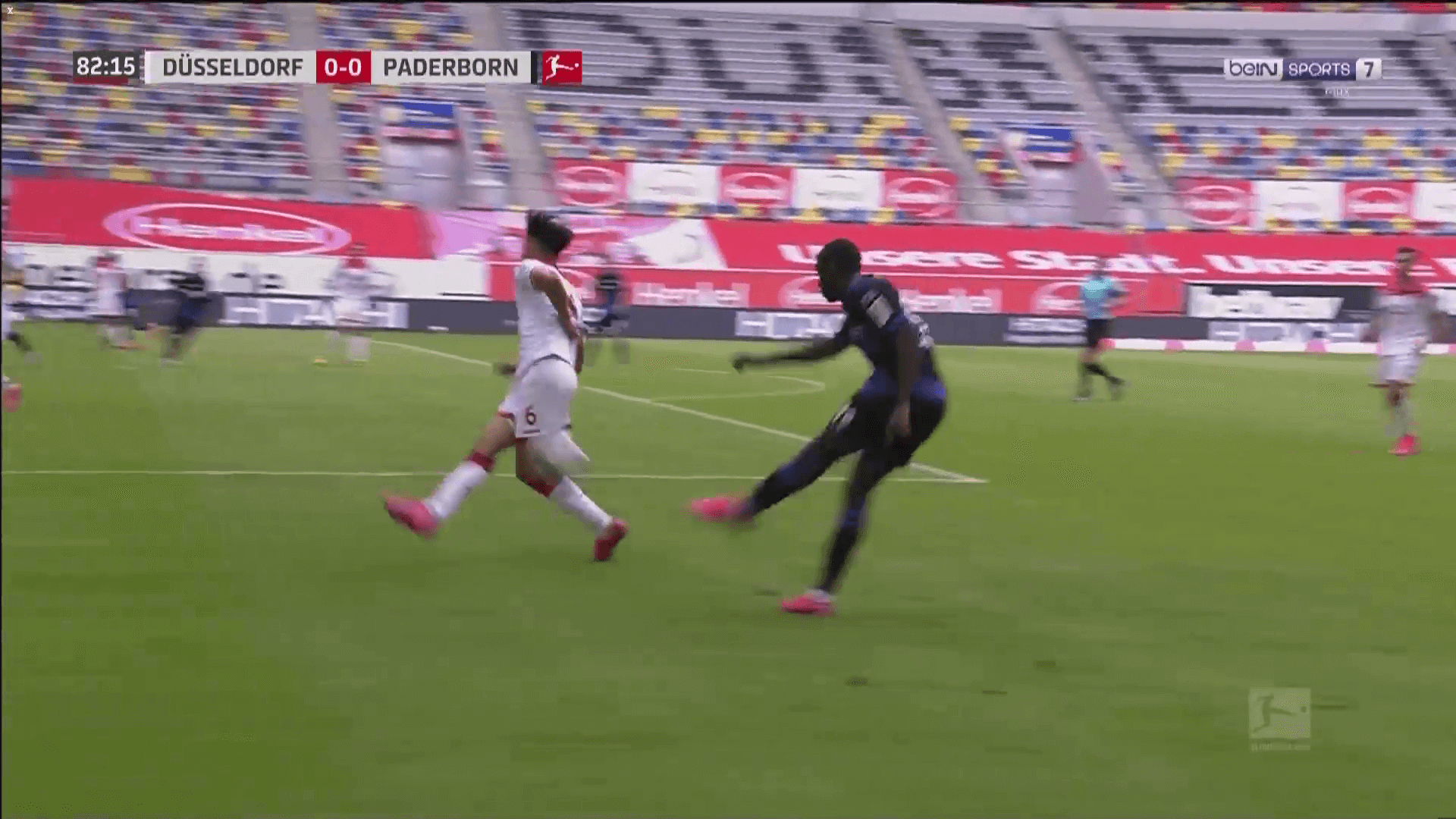
Clearances
A well organised defensive setup might enable defenders to win the first ball, nevertheless, the clearance is important as well.
The most important aspect of clearances is to clear the ball into less dangerous areas and ideally into space which can be dominated by defenders rather than attackers. Because even if a space is empty, there is still a certain probability of an attacker or defender reaching the ball first. Data analysts use so-called Voronoi diagrams to divide the space into zones around each player in order to visualise how much space every player dominates. Going further into detail would go beyond the scope of this analysis.
What we can extract from that, however, is that the players will need a good pre-orientation to recognise spaces where there is less threat of an attacking player to create a chance. This also disproves the myth that pre-orientation is solely needed during the offensive phase of the game.
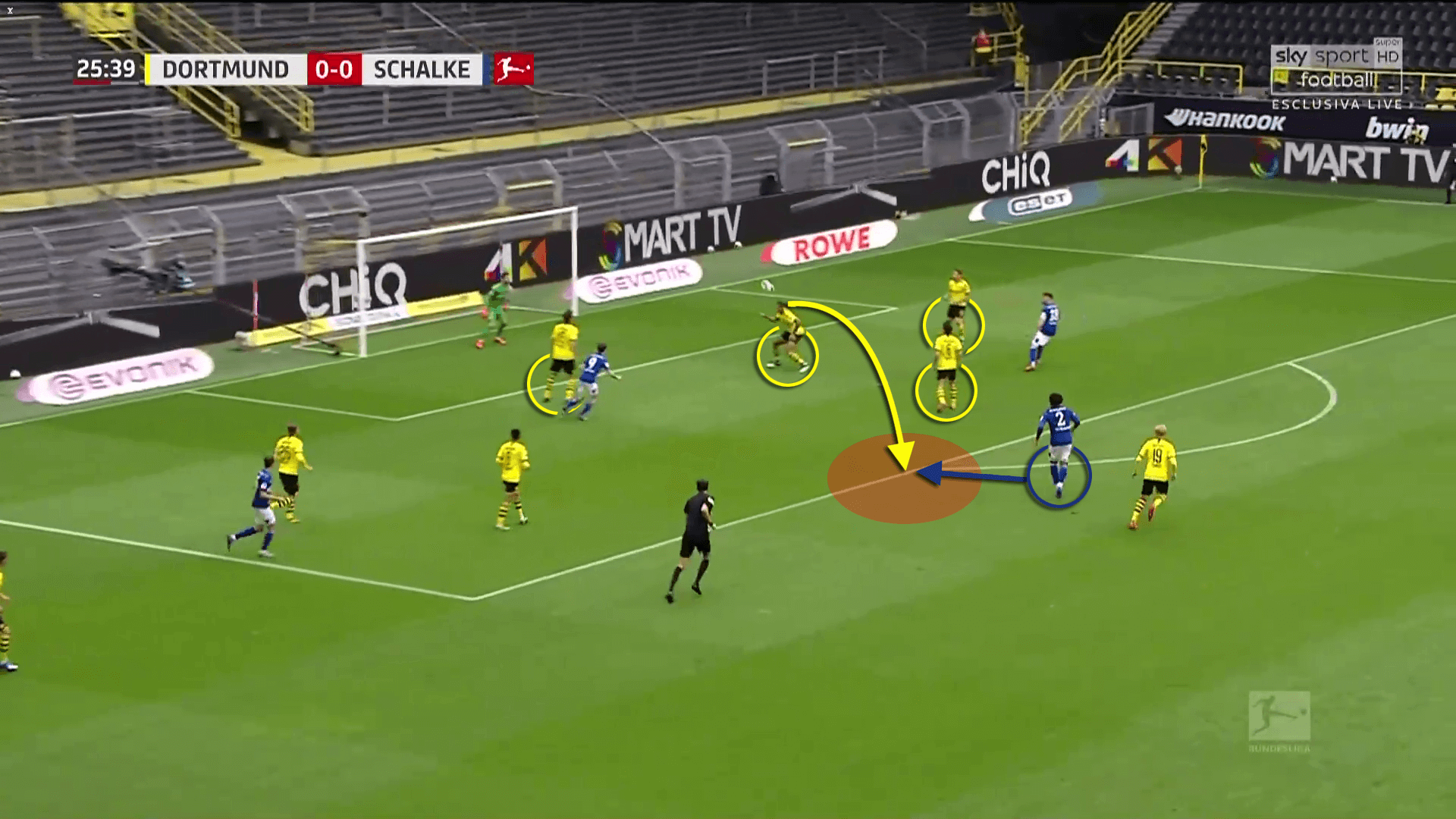
Simple principles can simplify and improve decision-making in clearing-situations for the players. Unless there is clearly no opposition player, clearances into the centre should be avoided. Instead, the ball should be cleared into wide areas far away from the goal. Moreover, it is easiest to clear the ball into the direction where it came from. Firstly due to a better pre-orientation and secondly because one only needs to hit the ball frontally. This decreases the risk of misplacing the clearance.
Conclusion
All in all, successfully defending crosses can be vital in football. Especially against opponents who like to put in crosses, a well organised defending setup combined with tight marking in goal near areas, as explained in our analysis, is required to keep a clean sheet. Our tactical theory piece proposed several concepts and principles for defending crosses.




Comments